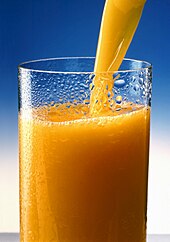**Historical Evolution of Juice:**
– The term ‘juice’ originated from Old French in 1300.
– Lemonade production dates back to the 16th century.
– Orange juice originated in the 17th century.
– Thomas B. Welch developed a pasteurization method in 1869.
– The McKinley Tariff Act of 1890 regulated foreign fruit juice circulation in the US.
**Terminology and Regulations:**
– UK defines ‘juice’ as 100% fruit juice.
– US regulations require ‘fruit juice’ to be 100% juice.
– ‘Fruit nectar’ in the UK must contain 25% to 50% juice.
– ‘Juice cocktail’ refers to a blend of fruit juice with other ingredients.
– Compliance with regulations is crucial for the fruit juice industry.
**Consumption Trends and Statistics:**
– New Zealand and Colombia are top fruit juice consumers.
– US consumed around 6.6 US gallons of juice per capita in 2015.
– More than half of preschool-age children in the US are regular juice drinkers.
– Fruit juice consumption increases with country income levels.
– Fruit juice consumption on the rise in Europe, Australia, New Zealand, and the US.
**Production Methods and Technologies:**
– Juice extraction involves washing, extraction, straining, and pasteurization.
– Preservation methods include canning, pasteurization, and freezing.
– Pulsed Electric Fields Processing may enhance juice quality and preservation.
– High-intensity pulsed electric fields are used in fruit juice processing.
– Immobilized enzymes are utilized in industrial fruit juice production.
**Health Effects and Research Findings:**
– Nutrients in juice include carotenoids, polyphenols, and vitamin C.
– High sugar fruit juice consumption linked to weight gain.
– Studies on fruit juice’s impact on weight and health outcomes vary.
– Excessive fruit juice consumption linked to reduced nutrient intake.
– Recommendations on fruit juice consumption vary for different age groups.
Juice is a drink made from the extraction or pressing of the natural liquid contained in fruit and vegetables. It can also refer to liquids that are flavored with concentrate or other biological food sources, such as meat or seafood, such as clam juice. Juice is commonly consumed as a beverage or used as an ingredient or flavoring in foods or other beverages, such as smoothies. Juice emerged as a popular beverage choice after the development of pasteurization methods enabled its preservation without using fermentation (which is used in wine production). The largest fruit juice consumers are New Zealand (nearly a cup, or 8 ounces, each day) and Colombia (more than three quarters of a cup each day). Fruit juice consumption on average increases with a country's income level.



